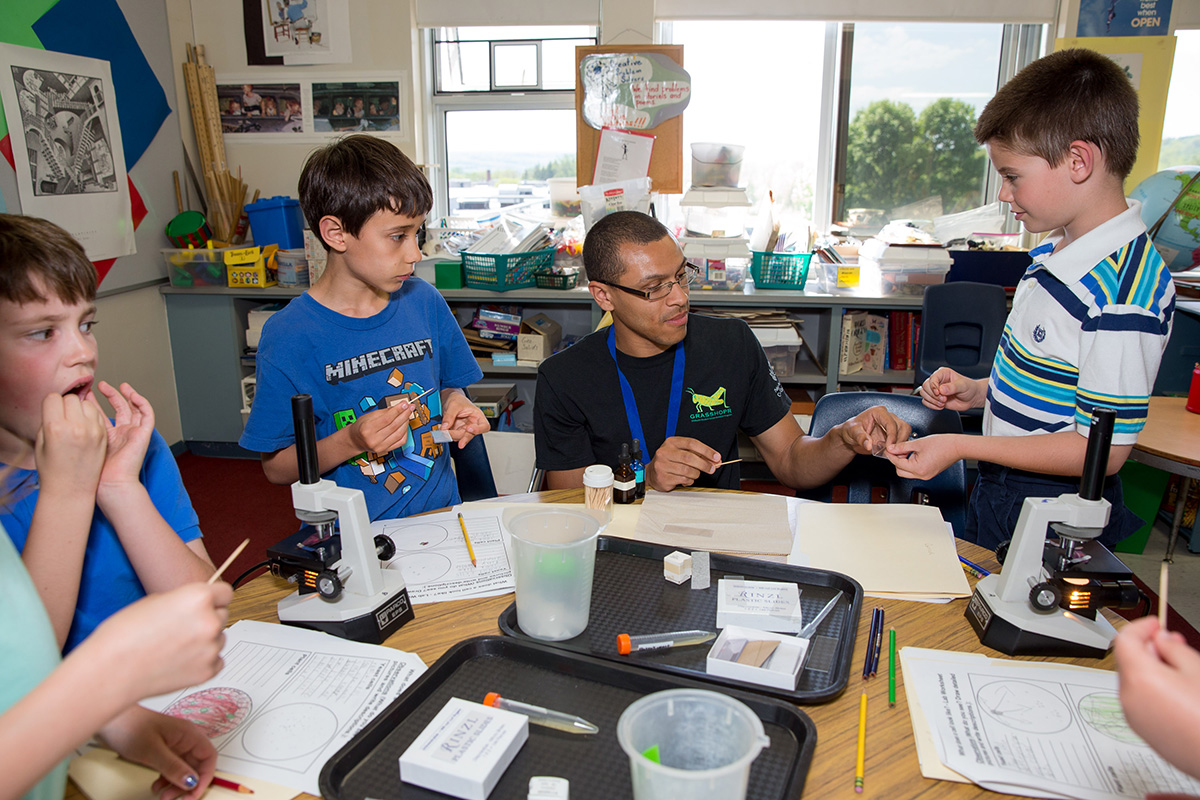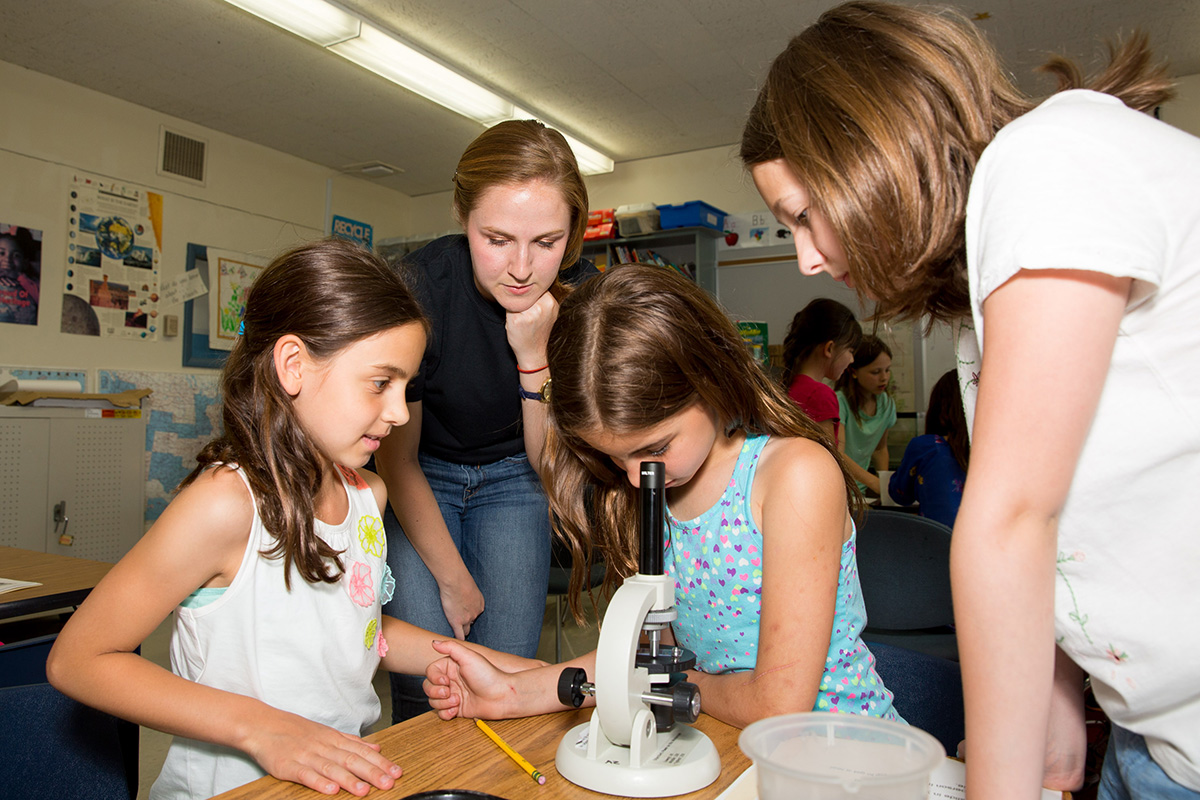Graduate students bring expertise to local schools
By Krishna Ramanujan

A volunteer program is connecting graduate students in the sciences and other fields with K-12 classrooms to teach mini-courses in Tompkins, Cayuga and Seneca county schools.
The Graduate Student School Outreach Program (GRASSHOPR), which began in the mid-1990s and is supported by Cornell’s Public Service Center, is seeking student applicants to the program by this year’s Oct. 7 deadline.
In 2015-16, a total of 87 GRASSHOPR volunteers spent more than 1,000 combined hours teaching three- to five-session mini-courses in fields ranging from the sciences to archaeology to economics in nine local school districts.
“The program establishes a connection between the Cornell graduate student and the community, and that’s an immediate benefit,” said Steve Halaby, a graduate student in molecular biology and genetics and a volunteer at GRASSHOPR. “K-12 students can be inspired by researchers that come to the classroom and provide them with resources and expertise they may not otherwise be able to access.”
Graduate students have also brought materials and equipment – such as yeast, microscopes and slides – for use in the classroom. This year, GRASSHOPR is collaborating with the Cornell Institute for Biology Teachers and their equipment-lending library.
GRASSHOPR volunteers combine mini-course abstracts suggested by graduate students into a catalog, which is then sent to participating elementary, middle and high schools. Teachers can choose topics that best suit their classes.

Courses offered have included “What’s in a Cell?”, taught to elementary school students to expose them to different types of cells and to develop skills using the scientific method of inquiry. A mini-course for middle-schoolers, “The Science of the Past,” introduced students to archaeology and the scientific techniques involved in understanding the past. And a high school course provided lessons on the “Basics of Investing.”
Some of the GRASSHOPR volunteers are women or are from underrepresented minority backgrounds, showing girls and minority children that researchers may come from a range of backgrounds, Halaby said.
“We do not have enough women and people of color in STEM [science, technology, engineering and math] fields,” Halaby said. “When we go to an elementary school, we want to engage those children and we want to be able to show them that if you are a person of color or a girl, there is someone out there in science who looks like you.”
Since many students may still not be interested in science, 36 out of 133 mini-courses taught in 2015-16 were in language arts, social studies and other fields outside of STEM.
For the volunteers, the program helps them make science understandable in a contemporary climate where scientists may be distrusted, Halaby said.
“By taking your research as a scientist and going out and explaining it to children,” he said, “it teaches the graduate student how to be a better teacher and break down their research so people outside the field can understand it.”
Media Contact
Get Cornell news delivered right to your inbox.
Subscribe